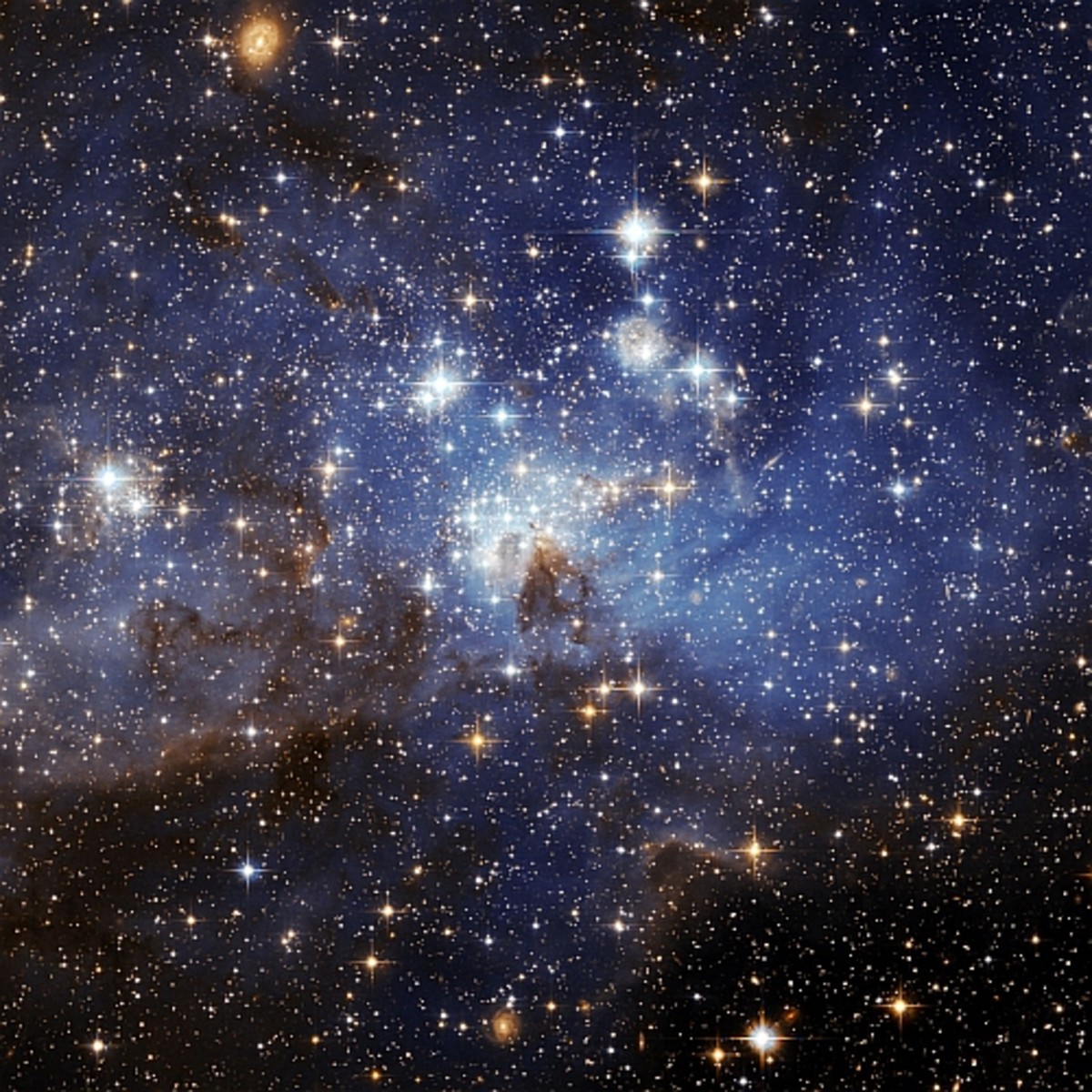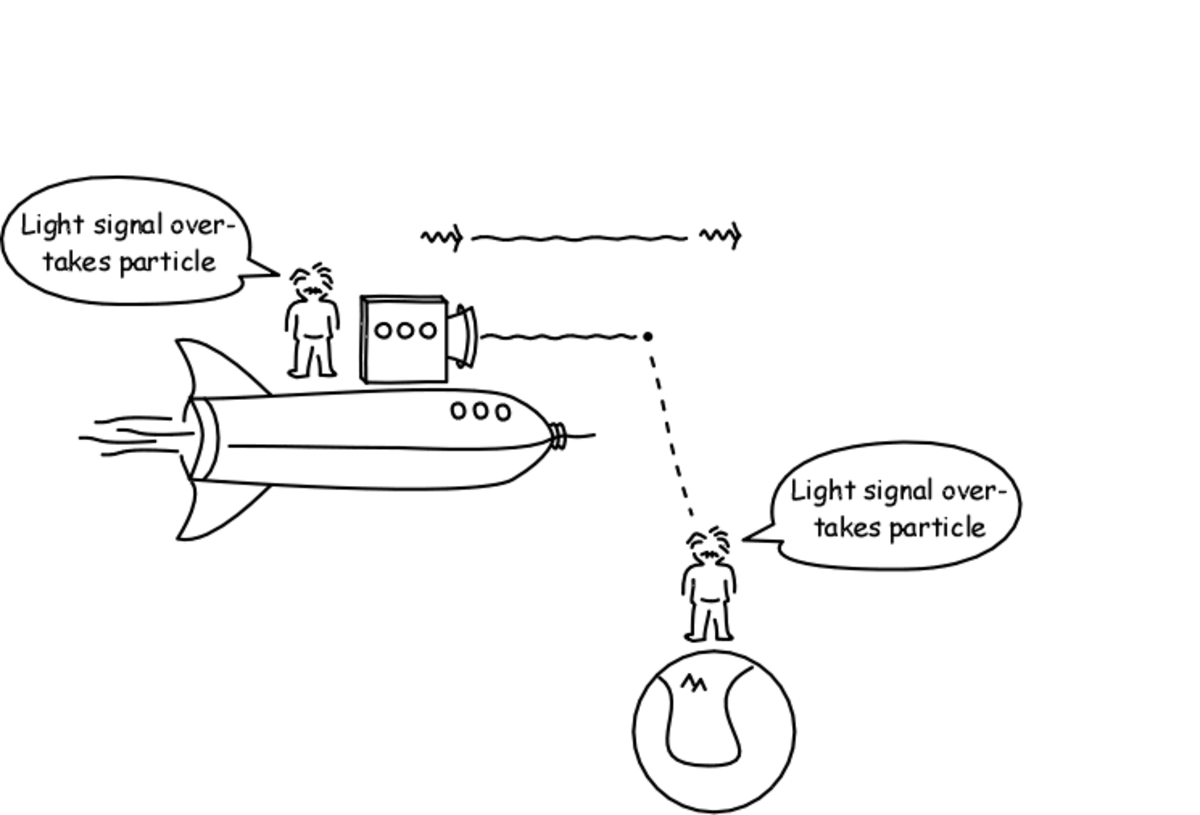Accident of Nature or Intelligent Design?

Accident of Nature or Intelligent Design?
Life on Earth is abundant. However, life in the Universe is debatable. As of now, in 2007, we have no evidence that life as we know it exist anywhere else.
The big question becomes - why? Is our planet a freak accident of nature or are we the product of an Intelligent Design?
I will present 10 items to make the case for the latter. As an Engineer and a Scientist, I have faith I can present a convincing case. Let me know what you think at the end. Take the poll.
-November 2014
My Summary of 10 Items
Here is the list of 10 items. I will go into details on each in later modules.
- Speed of light.
- Tilt of the Earth on it's axis.
- Size and location of the Moon.
- Properties of water.
- The human brain and consciousness.
- Composition of Earth's atomosphere.
- Ocean salinity.
- Earth's magnetic pole.
- The 92 natural elements of the periodic table.
- Our Sun.
The speed of light
The one constant in our Universe is the speed of light. Represented by the letter "c", it is an exact number 186,282 miles per second.
Most individuals are accustomed to the addition rule of velocities: if two cars approach each other from opposite directions, each travelling at a speed of 50 km/h, relative to the road surface, one expects that each car will perceive the other as approaching at a combined speed of 50 + 50 = 100 km/h to a very high degree of accuracy.
However, at velocities at or approaching the speed of light, this rule does not apply. Two spaceships approaching each other, each traveling at 90% the speed of light relative to some third observer between them, do not perceive each other as approaching at 90% + 90% = 180% the speed of light; instead they each perceive the other as approaching at slightly less than 99.5% the speed of light.
Remember Einstein's famous formula: E = mc2. It says mass and energy are interchangeable.
The tilt of the Earth
The Earth rotates about its axis once every 24 hours. The axis is tilted on an angle approx. 23.45 degrees. This tilt is the reason for our four seasons. It is estimated by scientists that only a small deviation from this angle will mean drastic swings in global weather hostile to life.
The Moon
The Moon is Earth's only satellite. It is 2159 miles in diameter and it is approx. 238,000 miles away in distance. It revolves around the earth every 29.5 days. What is truthly unique is that the Moon and Sun are in just the right proportion and distances such that a solar eclipse is possible every so often and seen from Earth. This simple fact has lead to the discovery of many secrets of our cosmos.
Unique properties of water
Water or H2O is necessary for life besides air and the Sun. What is truly unique about water is the atomic structure of this molecule. It is the only molecule that exhibit the following property. When water freezes at 0 degrees, it actually expands in volume such that its density is less than the liquid form and as such allows ice to float on water. It is this unique property that allows the earth to enjoy our fairly moderate climate and to have the regular climate cycle. Without this simple fact, our planet may well be a frozen ice cube.
The human brain
The human brain is an enigma. Scientists don't know how we are able to have consciousness. We can build a computer that has vast amount of memory cells and we can program the computer to respond to various stimuli and we can even add super computing power so that it can compute complex formulas with lightning speed. But one thing still eludes us. We can not create "artificial intelligence". We cannot design a robot that will carry a conversation with us or debate with us importance issues or share a joke. The human brain is also many fold greater in capability than the next closest animal. Even though our DNA may be 95% shared with the chimpanzee, we are self aware. That is the biggest difference between humans and the animal world. Evolution cannot explain how this giant leap came about.
Earth's atomosphere
The earth's atomosphere is ideal for life. Not only does it contains the right proportions of oxygen and nitrogen and water vapor and carbon dioxide, it also contains a thin outer layer. The outer ozone layer acts as a shield against deadly ultraviolet rays from the sun. The amazing thing about the earth's atomosphere is how stable it is. There seems to be a feedback mechanism at work to keep the various components in balance. A volcano can errupt and spew ashes and dust and carbon dioxide into the atomosphere but over a few months, the earth recovers. The reason it can recover is tied to the rest of life on earth. The plants and animals create a feedback loop that keeps the composition in balance. Another connection is between the atomosphere and our seasons. Our weather system and seasonal changes are the result of the interaction between the ocean and the atomosphere and the tilt of the earth and the revolution of the earth.
The ocean
The ocean occupies 4/5 of the surface of the earth. It is approx. 3.5% salt. It is also amazingly stable. We know for example the dead sea is considerably more salty. Theoretically, our ocean can be saltier than it is. It is tied to the cycle of rain and runoffs from the land mass which contains various salts. Yet, it remains stable to support the various aquatic life in the ocean over millions of years.
Earth's magnetic pole
Another unusual trait of the earth is the magnetic field that is generated by the rotating molten iron core. This magnetic field gives us the ability to navigate around our globe. How convenient and lucky for us.
The periodic table of 92 basic elements.
The Earth is lucky to be of just the right size and distance from the sun and composition to contain the various elements that are necessary for life. If the earth is too large, it would most likely be completely gaseous. If it is too small, it would be a solid mass. Instead, we have a combination of various useful elements that can combine to form even more useful compounds.
Our Sun - the source of all life and energy
The Sun is one of billions and billions of stars in our universe. Yet, it is precisely the "right" size to create a constant source of light and radient energy. The Sun is a hydrogen nuclear fusion reactor. It is converting mass into energy following Einstein's theory E=mc2. The reason we know what we know about the Sun is coincidentally because we have a moon of just the "right" size and distance to allow us to have a complete solar eclipse. It is only during these rare times that we are able to measure and learn about our Sun. Accident? I think not.
Conclusion
In this Hub, I have selected 10 items in our world that demonstrate the uniqueness of our existence. It can be argued that all this is the product of an accident - a freak of nature or perhaps as Carl Sagan postulate a result of chance in an incredibly large universe.
I think not. The various pieces seems to fit together like a giant puzzle. It is also understandable that our world was created for discovery. What I mean by that is that we are given just the right amount of information such that we have the ability to discern the secrets or mysteries of our natural world. In another word, God or some intelligent designer, provided us with the construct so that we may discover his secrets.
Some related information...
- Speed of light on wikipedia
A detailed explanation on the speed of light. - Tilt of the Earth on wikipedia
The Earth's tilt on its axis. - The moon on wikipedia
Our Moon is our only satellite.. - Water on wikipedia
The unique water molecule. - Human brain on wikipedia
The human brain - a mystery. - Earh's atomosphere
Earth's atomosphere on wikipedia. - Ocean on wikipedia
Our ocean. - Periodic Table on wikipedia
The 92 basic elements. - the Sun on wikipedia
Our Sun. - Rare Earth hypothesis - Wikipedia, the free encyclopedia
A huge number... - Some answers for atheists
Some common answers.








